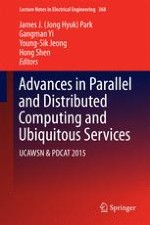This book contains the combined proceedings of the 4th International Conference on Ubiquitous Computing Application and Wireless Sensor Network (UCAWSN-15) and the 16th International Conference on Parallel and Distributed Computing, Applications and Technologies (PDCAT-15). The combined proceedings present peer-reviewed contributions from academic and industrial researchers in fields including ubiquitous and context-aware computing, context-awareness reasoning and representation, location awareness services, and architectures, protocols and algorithms, energy, management and control of wireless sensor networks. The book includes the latest research results, practical developments and applications in parallel/distributed architectures, wireless networks and mobile computing, formal methods and programming languages, network routing and communication algorithms, database applications and data mining, access control and authorization and privacy preserving computation.
